In recent years, the Binhe Street has closely focused on the modernization goals of grassroots social governance, deeply implementing the central government’s deployment of community embedded service construction as a livelihood project, and concentrating on the task requirements of creating a convenient and comfortable “good community”, a well-serviced “good neighborhood”, and higher quality “good housing” in the Kangbashi District. The street adheres to the leadership of party building, integrates multiple resources, and innovatively creates an “integrated three types” embedded neighborhood center. Currently, 6 neighborhood centers have been established in the community, with 4 more under construction, accelerating the realization of full coverage of neighborhood centers in the area. By deeply practicing the three major concepts of “spatial embedding, service embedding, and functional embedding“, it aims to build a neighborhood spatial grid that is appropriately scaled, well-structured, widely covered, and has strong driving force, enhancing residents’ sense of happiness at their “doorstep”.

Spatial Embedding: Activating “Golden Corners and Silver Edges”, Bringing Happiness Closer

Precise site selection and efficient utilization. Adhering to the principles of effectiveness and practicality, the neighborhood centers are upgraded and built through measures such as resource integration and renovation of existing venues, creating composite, modular, and mini neighborhood centers. Based on residents’ needs for nearby activities, the street insists on the principle of adapting to local conditions, constructing neighborhood centers within each community to facilitate residents’ access to inclusive public services. For communities with good hardware conditions, standalone composite neighborhood centers are built; for communities without auxiliary facilities, the “micro-renewal” method is adopted, utilizing scattered or previously unused areas within the community, such as along walls or open squares, to create modular neighborhood centers, and transforming property buildings into mini neighborhood centers; the nucleic acid testing booths that were idle after the pandemic are converted into study rooms, forming a literary courtyard. The goal is to create a well-equipped neighborhood space in a limited area, maximizing the use of leftover community space to build a space for residents to enjoy, making it convenient for them to access high-quality and efficient convenience services right at their doorstep.
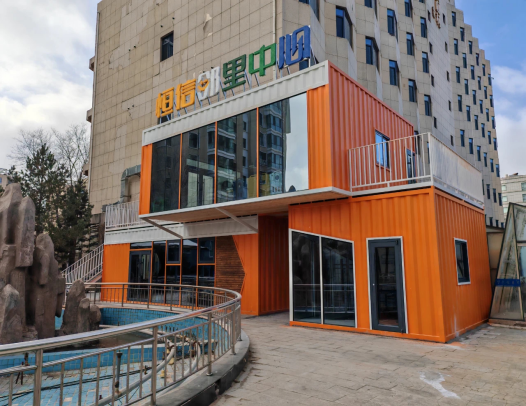
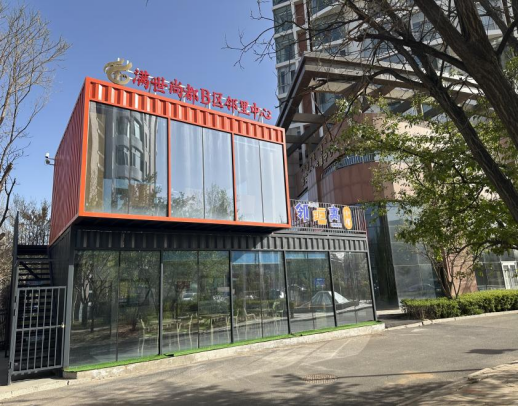





Functional Embedding: Precisely Matching Needs, One Center Solving Many Problems

Accurately grasping residents’ needs, achieving “one center, one plan”, and reasonably configuring the functions of neighborhood centers at residents’ doorsteps. First, achieving care for children, the neighborhood center in the southern area of Lansheng Garden, adjacent to the first primary school in Kangbashi District, introduces a third-party management organization to provide meals, homework guidance, and rest services, solving the problem of “difficulty in childcare” for working families. Children’s playgrounds are set up in each neighborhood center for children to play. Second, achieving care for the elderly, creating three elderly care dining halls: the Love Dining Hall in the southern area of Lansheng Garden, the Slow Time Courtyard Elderly Service Center in Area A of Heyao Garden, and the Warm Neighbors Dining Hall in Kangcheng Mingyuan Neighborhood Center, providing healthy and affordable meal services, and setting up therapy rooms, hairdressing rooms, and chess rooms to meet the diverse needs of the elderly; Third, achieving income for labor, opening a “Beautiful Workshop” in the neighborhood center of Liri Garden, relying on the party building-led “work-for-relief” project to provide free handicraft training services, broadening the income channels for transferring farmers and herders; Fourth, achieving medical care for the sick, the Kangcheng Community Neighborhood Center, Xingwang Community Neighborhood Center, and Ningxin Community Neighborhood Center collaborate with community health service centers to provide medical services, addressing the issues of “difficult and expensive medical care”. Reasonably planning and configuring the functional rooms of neighborhood centers to truly meet residents’ needs.

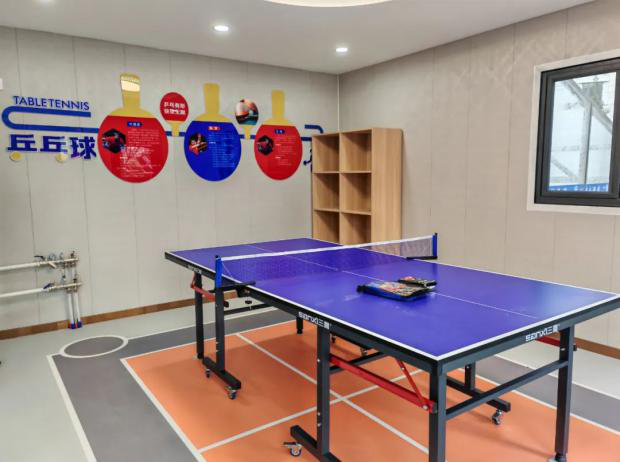
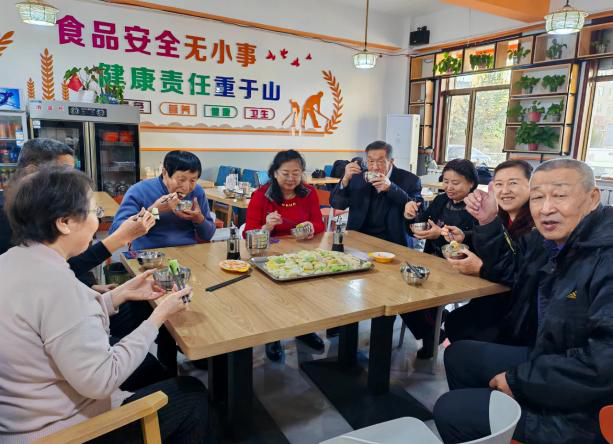


Service Embedding: Age-Friendly Supply, Activating Neighborhood “Warm” Energy

Diverse services, precisely reaching out. Starting from the actual needs of the masses, continuously promoting the diversification of neighborhood center service projects and the variety of service groups. First, for party members and the public of all ages in the area, various themed activities such as “Red Heart Party-Mass, Beautiful Party-Mass, Warm Home Party-Mass, Happy Party-Mass” are carried out around festive days, providing experiential party classes, public lectures, legal consultations, environmental sanitation improvements, and other services to meet the personalized needs of residents. So far, 80 activities have been held, effectively enriching the spiritual and cultural life of party members and the public in the area. Second, for the new employment group, the “Binxin Hero New Heart Towards the Party” party-mass service project is implemented. Continuous efforts are made to care for the new economy and new employment groups, formulating the “Binhe Street Service Project List for New Employment Groups”, establishing the “Binxin Hero” team, and carrying out a series of caring activities such as delivering medical care and medicine to workers, health check-ups, policy briefings, and collective birthday parties 5 times; Third, for children, “Cute New Classroom” and “Red Scarf Classroom” are opened, offering various courses such as handicrafts, physical training, and painting, providing childcare, youth care, and after-school tutoring services; Fourth, for the elderly, the “Silver Age Enjoyment” party-mass service project is implemented, providing services such as free haircuts, health check-ups, and housekeeping to continuously meet the needs of the elderly, improving their quality of life, and solidly promoting community home-based elderly care.


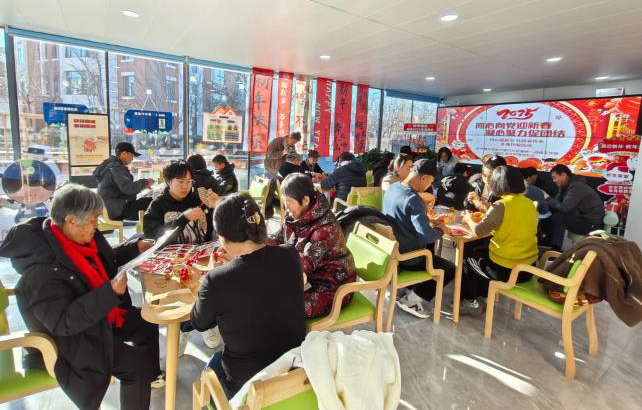
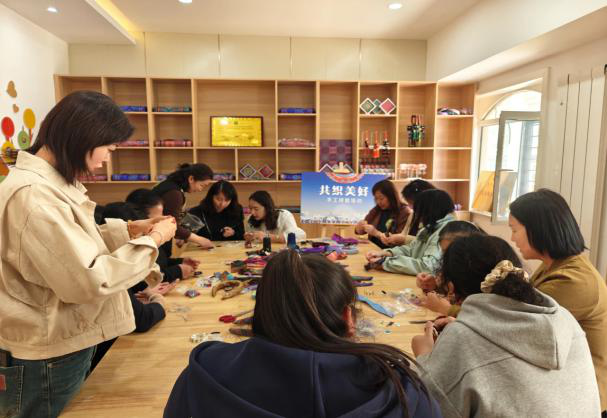
From “Strange Neighbors” to “Friendly Neighbors”, Co-constructing and Sharing a New Home. The construction of embedded neighborhood centers not only extends the “nerve endings” of grassroots party organizations serving the masses, providing a service platform for party members to play a pioneering and exemplary role, but also effectively promotes resident interaction through refined and specialized service supply, catalyzing the transformation of neighborly relationships from “strange” to “intimate”. In the next step, Binhe Street will continue to enrich the public facility configuration of neighborhood centers, scientifically plan functional zoning, carefully organize and carry out various party-mass activities, and gradually achieve full coverage of neighborhood centers in communities, effectively enhancing residents’ sense of gain, happiness, and belonging.






Images and Text: Zhao Lu
Editor: Kubuqing
Reviewed by: Qin Zhen
Final Review: Yang Yiran
